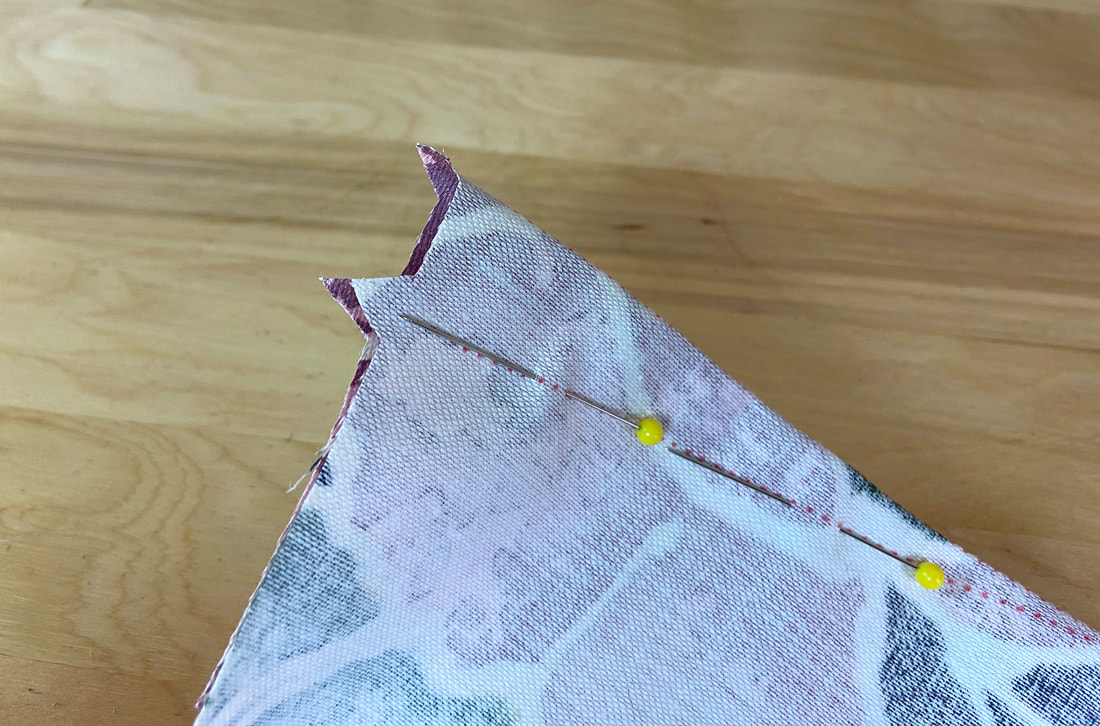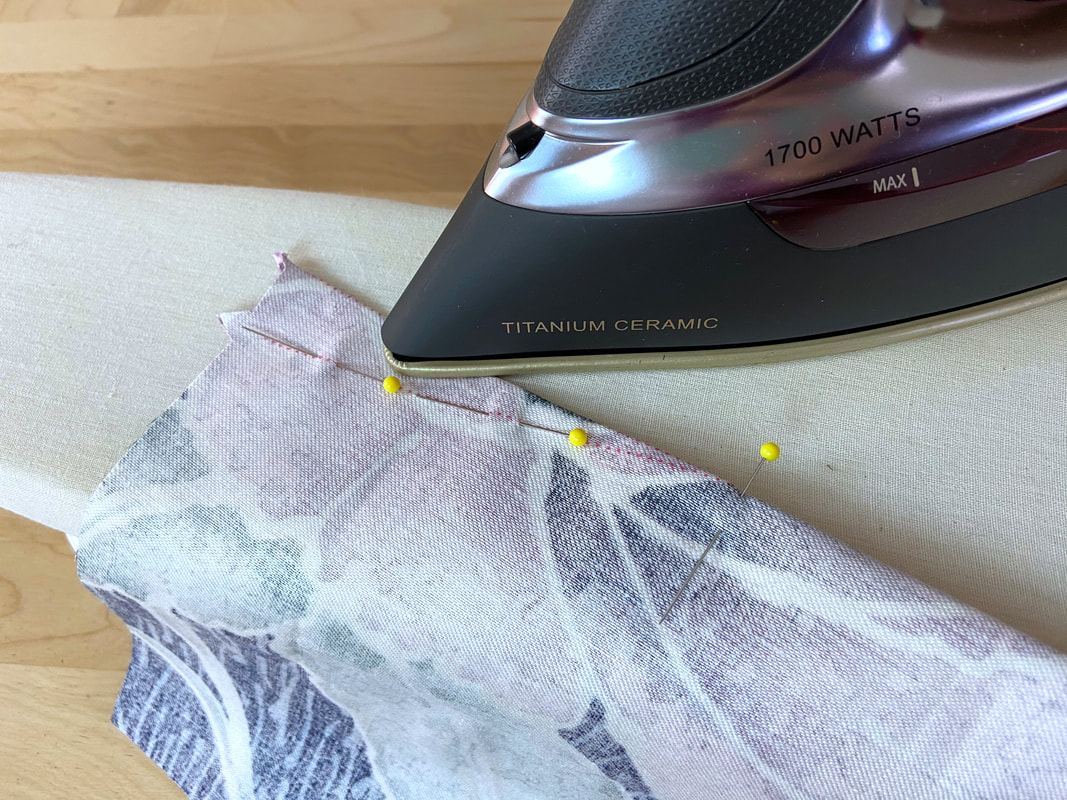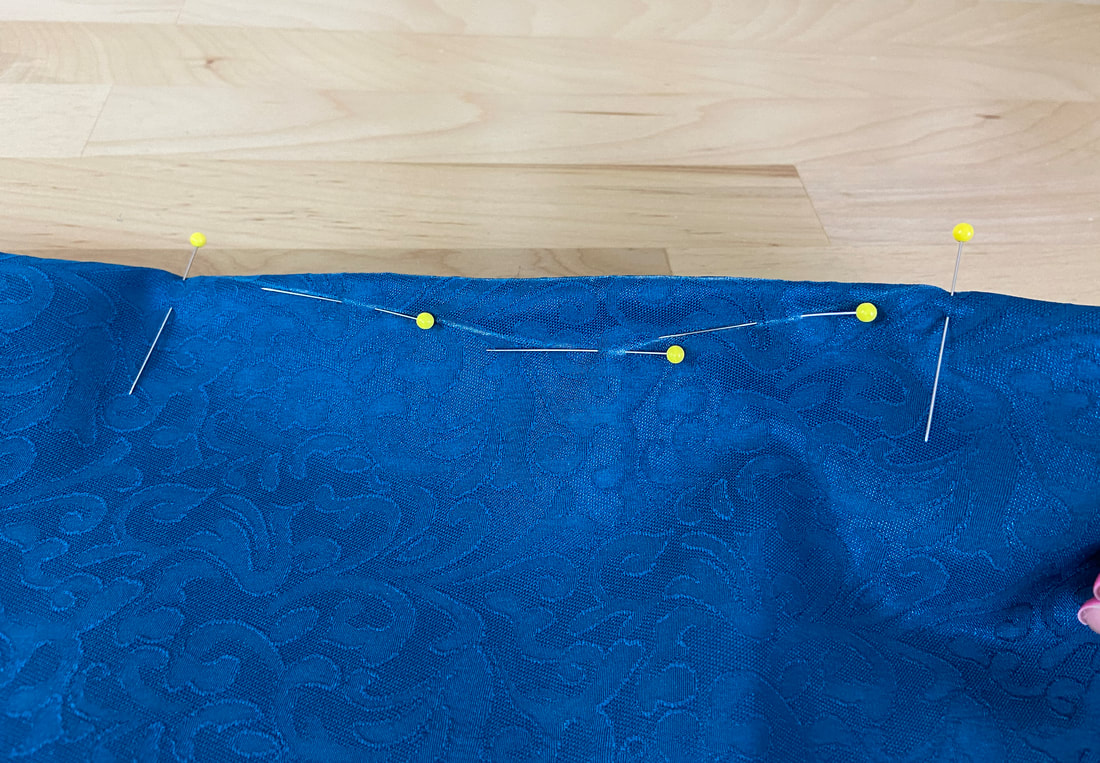The first step in the process of sewing a dart is understanding the correct way to fold and pin it in position prior to stitching.
Dart markings transferred from the pattern onto the wrong side of the fabric provide an important guide for correctly folding and pinning the dart.
For that reason, all dart lines, including the center fold line, should be transferred very clearly using the method most appropriate for the fabric and project at hand. These lines are then used to easily fold and pin the dart in preparation for stitching.
If the folding process is not completed correctly at this initial stage, the finished darts may affect the fit of the garment and in some cases, even create strain and tension within the garment’s structure.
How To Fold Darts In The Sewing Process
Dart lines and all appropriate markings should always be transferred to the wrong side of the fabric. Keep this in mind when aligning the paper patterns to the fabric layer in the cutting process- this alignment should naturally allow the darts to be transferred directly onto the wrong side, depending on the marking technique used.
Regardless of style, darts are always folded from the wrong side of the fabric with the excess pointing towards the underside of the garment. In other words, the darts’ folded excess should always correspond to the inside of the garment.
To start with, fold the dart in half following the dart’s marked center fold line accurately. Fold from the widest area of the dart to the dart vanishing point.
Once folded, the marked center line should correspond to the fabric’s fold line.
The dart vanishing point should be located directly on this fold line.
Similarly, when folding contour darts (shown below), fold from the widest area, moving out towards each dart point.
When folding the dart down its center line, the two dart legs, or dart stitch lines, should naturally overlap and align perfectly on top of each other.
It helps to insert a few pins parallel to the fold to keep the dart legs temporarily aligned.
If sewing single pointed darts, the dart stitch line notches located at the seam edge should align perfectly on top of each other, while the center line notch should correspond directly to the fold, opposite the vanishing point. If you notice this is not the case, make sure to adjust the fold until the stitch lines are matched as needed.
Once you achieve the perfect alignment (dart stitch lines overlap and vanishing point is directly on the fold line), it helps to iron the fabric fold prior to pinning and stitching.
As you press, make sure not to go past the vanishing point(s) staying only within the excess of the dart.
Pinning Darts Prior To Stitching
Switch the direction of the pins from parallel to perpendicular in relation to the fold. Doing so will facilitate the stitching process.
You should have a pin at the widest area of the dart, a second pin at the vanishing point, and additional pins should cover the rest of the dart’s stitch lines as described above.
Pins should be inserted through both overlapping stitch lines (dart legs) simultaneously, in perpendicular direction to the fold. Pinning perpendicular to the fold will provide added stability and allow for easy removal during the stitching or hand basting process.
For contour darts with two vanishing points, fold and pin the dart at the widest, middle area first, at each vanishing point second, then as a final step, pin through the remaining area of the dart stitch lines.
Again, it helps to iron the dart fold line for added stability.
After the dart is folded, aligned and pinned in place, you may start machine stitching right away- that’s if you feel comfortable with your sewing machine.
If you are still in the learning stages, it helps to hand baste the folded dart, right next to the dart stitch lines as shown. This will provide extra stability during the machine stitching process.
To learn more about hand basting and how to apply an uneven hand basting stitch, check out this tutorial: Hand Basting


















